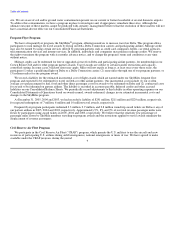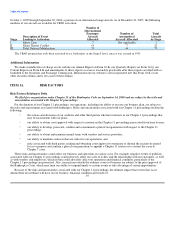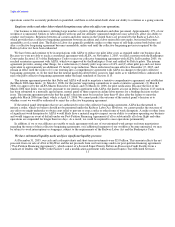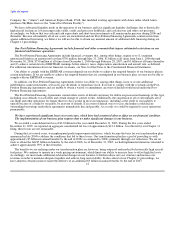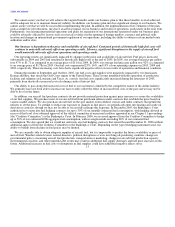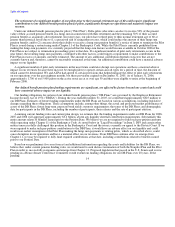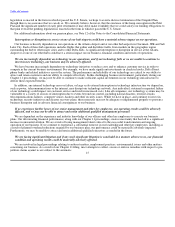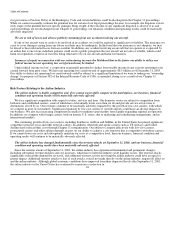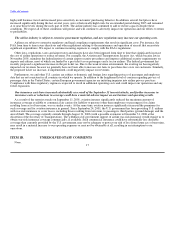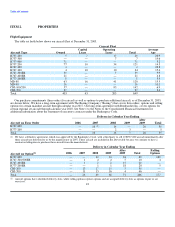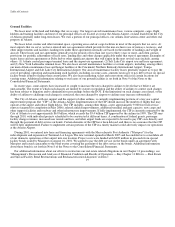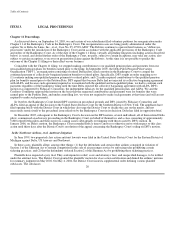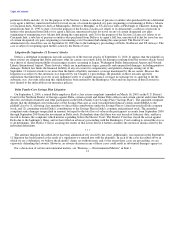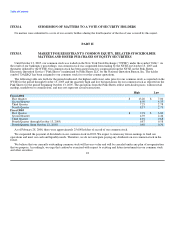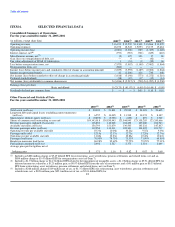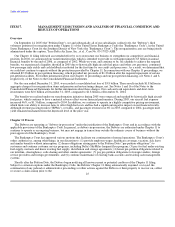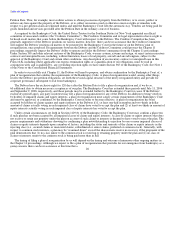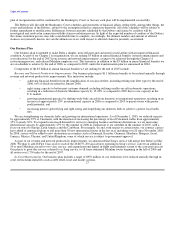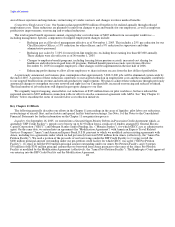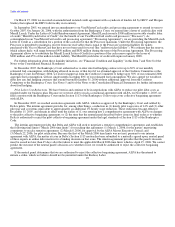Delta Airlines 2005 Annual Report Download - page 24
Download and view the complete annual report
Please find page 24 of the 2005 Delta Airlines annual report below. You can navigate through the pages in the report by either clicking on the pages listed below, or by using the keyword search tool below to find specific information within the annual report.
Table of Contents
Ground Facilities
We lease most of the land and buildings that we occupy. Our largest aircraft maintenance base, various computer, cargo, flight
kitchen and training facilities and most of our principal offices are located at or near the Atlanta Airport, on land leased from the City
of Atlanta generally under long-term leases. We own a portion of our principal offices, our Atlanta reservations center and other real
property in Atlanta.
We lease ticket counter and other terminal space, operating areas and air cargo facilities in most of the airports that we serve. At
most airports that we serve, we have entered into use agreements which provide for the non-exclusive use of runways, taxiways, and
other improvements and facilities; landing fees under these agreements normally are based on the number of landings and weight of
aircraft. These leases and use agreements generally run for periods of less than one year to thirty years or more, and often contain
provisions for periodic adjustments of lease rates, landing fees and other charges applicable under that type of agreement. Examples of
major leases and use agreements at Delta hub or other significant airports that will expire in the next several years include, among
others: (1) Atlanta central passenger terminal lease and the airport use agreement; (2) Salt Lake City airport use and lease agreement;
and (3) New York LaGuardia terminal lease. We also lease aircraft maintenance facilities at certain airports, including, among others,
our main Atlanta maintenance base and hangar facilities at the Cincinnati/ Northern Kentucky International Airport, Tampa
International Airport and Salt Lake City International Airport. Our aircraft maintenance facility leases generally require us to pay the
cost of providing, operating and maintaining such facilities, including, in some cases, amounts necessary to pay debt service on special
facility bonds issued to finance their construction. We also lease marketing, ticket and reservations offices in certain locations for
varying terms. Additional information relating to our leases of our ground facilities is set forth in Note 9 of the Notes to the
Consolidated Financial Statements.
In recent years, some airports have increased or sought to increase the rates charged to airlines to levels that we believe are
unreasonable. The extent to which such charges are limited by statute or regulation and the ability of airlines to contest such charges
has been subject to litigation and to administrative proceedings before the DOT. If the limitations on such charges are relaxed, or the
ability of airlines to challenge such charges is restricted, the rates charged by airports to airlines may increase substantially.
The City of Atlanta, with our support and the support of other airlines, is currently implementing portions of a ten year capital
improvement program (the "CIP") at the Atlanta Airport. Implementation of the CIP should increase the number of flights that may
operate at the airport and reduce flight delays. The CIP includes, among other things, a new approximately 9,000 foot full-service
runway (targeted for completion in May 2006), related airfield improvements, additional terminal and gate capacity, new cargo and
other support facilities and roadway and other infrastructure improvements. If fully implemented, the CIP is currently estimated by the
City of Atlanta to cost approximately $6.8 billion, which exceeds the $5.4 billion CIP approved by the airlines in 1999. The CIP runs
through 2010, with individual projects scheduled to be constructed at different times. A combination of federal grants, passenger
facility charge revenues, increased user rentals and fees, and other airport funds are expected to be used to pay CIP costs directly and
through the payment of debt service on bonds. Certain elements of the CIP have been delayed, and there is no assurance that the CIP
will be fully implemented. Failure to implement certain portions of the CIP in a timely manner could adversely impact our operations
at the Atlanta Airport.
During 2001, we entered into lease and financing agreements with the Massachusetts Port Authority ("Massport") for the
redevelopment and expansion of Terminal A at Logan. The new terminal opened in March 2005 and has enabled us to consolidate all
of our domestic operations at that airport into one location. Project costs were funded with $498 million in proceeds from special
facility bonds issued by Massport on August 16, 2001. We agreed to pay the debt service on the bonds under an agreement with
Massport and issued a guarantee to the bond trustee covering the payment of the debt service on the bonds. Additional information
about these bonds is set forth in Note 8 of the Notes to the Consolidated Financial Statements.
For additional information about our efforts to restructure our real estate related obligations in our Chapter 11 proceedings, see
"Management's Discussion and Analysis of Financial Condition and Results of Operation — Key Chapter 11 Efforts — Real Estate
and Special Facility Bond Restructurings and Recharacterization Litigation" in Item 7.
19


